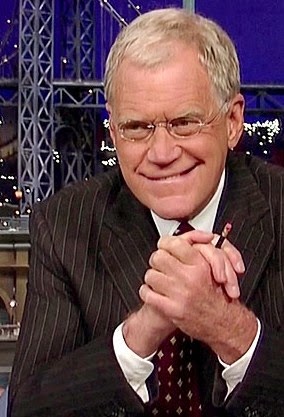 Nobody is on the fence about thirtysomething. You either love it or hate it.
Nobody is on the fence about thirtysomething. You either love it or hate it.
The ABC drama is released for the first time today in a DVD boxed set (thirtysomething The Complete First Season, Shout! Factory, $59.95, get more info here). The plan is to release all four seasons of the series in six month intervals.
Right from that lower case “t” there was something a little precious about thirtysomething. It hailed from and was based somewhat on
Marshall Herskovitz and Edward Zwick, writer/producers who went on to create My So-Called Life, Once and Again and, more recently, the short-lived web series Quarterlife.
Thirtysomething ran from 1987 to ’91. The word “yuppie” was just starting to emerge as a term for young urban professionals who had their heads up their own butts when thirtysomething came along to provide the picture in the dictionary.
So, for a lot of viewers, these weren’t especially sympathetic characters, especially Michael Steadman, the navel-gazing, part macho, part Alan Alda-ish young advertising partner played by Ken Olin (now a greying director/producer/actor on Brothers & Sisters).
Michael would lay on his back and whine about his life and just generally would talk way too much for a dude. The characters behaved as children to a far greater extent than adults had ever behaved before on TV. Some viewers hated this, others loved to mock that behaviour, others recognized themselves or their friends and were hooked.
But, love it or hate it, there is no denying that thirtysomething had an impact. Many shows that followed, even great shows like The Sopranos and so-so shows like Medium, owe Herskovitz and Zwick a debt for ramping up intimacy on television, especially in the depiction of married life.
Part of the credit goes to London, Ont.-native Paul Haggis, the Oscar-winner (Crash, Million Dollar Baby) who was a writer and director on this series. You can see Haggis’ hand in the quieter moments.
Watching the pilot again on this DVD set, I was struck by how much thirtysomething looked like a small budget indie film. That first hour is very claustrophobic, with much of it taking place in the home of Michael and his wife Hope (Mel Harris).
Herskovitz and Zwick reveal on the commentary track on the pilot that those scenes, unlike the rest of the series, were shot in an actual L.A. house. The limitations of space and lighting actually heighten the intimacy, bring you into their bedroom, kitchen and living room.
The creators studied film together and dissect their own work as if they were screening something by Ingmar Berman. One was pleased that some of the action and dialogue took place off screen, the other pointed out that Woody Allen was way ahead of them at this point in time.
More startling, to me anyway, was the breezy, swirling depth of focus and dialogue, especially in a kitchen scene that takes place mainly in one medium take. Hope and Michael are front right, Peter Horton and Melanie Mayron are back left. The interaction is busy and layered and tremendously natural (it all looks like it was lit from that one kitchen window), yet nobody blocks anybody and everybody gets heard.
Not a big deal today–ER had three layers of things happening at times–but even shows like The West Wing were a lot stagier than thirtysomething.
Harris, a former model, was a less experienced actress than her peers on thirtysomething but that actually seemed to help her early in this series. She seems real and natural, reacting rather than acting. Timothy Busfield, who plays Michael’s ad agency partner (the two are basically playing Herskovitz and Zwick) is a more fully rounded actor, which helps in the challenging scenes but not so much in the quieter, smaller moments. Patricia Wettig, Olin’s real life wife and playing Busfield’s wife in the series, was the show’s most elegant and versatile actress, and got to show it later in the series when her character had to deal with cancer. The other revelation in the pilot is the baby. Hope and Michael have this little baby daughter and she is such an adorable scene stealer. As one of the producer’s remarks, she shows so many values in the pilot–crying, laughing, sleeping–and all right on cue.
The other revelation in the pilot is the baby. Hope and Michael have this little baby daughter and she is such an adorable scene stealer. As one of the producer’s remarks, she shows so many values in the pilot–crying, laughing, sleeping–and all right on cue.
H & Z speculate that it helped that Olin and Harris were both already young parents when these scenes were shot. There is an ease and naturalness to those family scenes.
One of the trademarks of thirtysomething was the distinct, Crosby, Stills & Nash-ish guitar cues, strummed by Snuffy Walden. Sorting out music rights was one reason this series probably took so long to hit the DVD shelves but getting it all in was worth the wait. The sound was very distinct and evocative, punching home the notion that these were children of the ’60s stumbling into a richer, more nuanced ’80s vibe.
The boxed set, which comes with great extras including new interviews with the cast and producers, is a good investment for TV writers, producers, directors as well as media students. The series was a bridge from Hill Street Blues to Breaking Bad in terms of realism and immediacy. If you hated it back then you’ll still hate it, so don’t buy it. But if you loved it, you’ll find it holds up beyond the skinny ties, big hair and other ’80s excesses. It is an uneven series, as the producers concede in the lavish booklet that comes with the boxed set (“nothing is held back, some times to a fault,” they say). But it aimed high, took chances and still provides lessons for people making television today.
Prev Post





